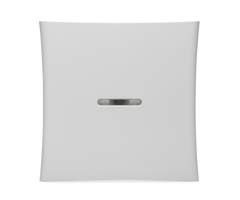The PG9920 PowerG Repeater and Why You Probably Don't Need One
Posted By Michael GorisIf you have a Qolsys IQ Panel 2 Plus, a DSC PowerSeries NEO, or a DSC Iotega, then you have likely worked with PowerG Sensors. These sensors are highly regarded for their impeccable security and great range. But if you really want to go overkill, you can also add a PowerG Repeater.

The DSC PG9920, more commonly known as the PowerG Repeater, effectively doubles the communication range for PowerG Sensors. The way that this works is that the PowerG Repeater will take the signal sent out from a PowerG Sensor and send it out a second time. The repeated signal will then make its way to the panel for regular operation.
Wireless repeaters have been used in the security industry mostly since wireless sensors became the new norm for alarm systems. Up until recently, wireless sensors for security systems typically had pretty lackluster range. It wasn't uncommon to see a wireless sensor with a communication range of under 200 feet. For those older wireless sensors, wireless repeaters are frequently used, as that is often the only way that they will work reliably in larger homes and businesses.
But PowerG Sensors are a completely different animal. When used with the Qolsys IQ Panel 2 Plus, these sensors offer a wireless range of up to 2,000 feet in open air. And if you use a PowerG Sensor on a DSC PowerSeries NEO with an added transceiver, then you can expect a wireless range of 2 km in open air. You read that correctly - 2 kilometers!
Granted, these are open air communication ranges. You will need to consider obstacles like thick walls and large metal obstacles that can reduce wireless range. However, we have had many customers use PowerG Sensors in places like warehouses, strip malls, industrial complexes, and other large locations without experiencing any communication issues. And this is all without the use of a repeater!
With that in mind, the odds of you needing a repeater for your PowerG Security System are pretty slim, unless you're really pushing the limits of wireless communication. Most users are not expecting their systems to work beyond the confines of a home or a small business. But if you do put a PG9920 Repeater to use, then you can expect some truly astounding wireless range. For an IQ Panel 2 Plus, PowerG Sensors can communicate from up to 4,000 feet away in open air once a repeater gets involved. And on a DSC PowerSeries NEO, this range is up to 4 KILOMETERS in open air!
The most common situations where PowerG Repeaters are used are in locations like manufacturing facilities and other major industrial complexes where large metal objects, heavy machinery, and thick walls disrupt the communication range so severely that using a PowerG Repeater is the only way for the sensor signals to make their way back to the panel. But understand that these are very uncommon situations. Most likely, you probably do not need a PowerG Repeater.
If you are setting up a system with PowerG Sensors, then we will typically recommend that you try to do so without using a repeater. You probably don't need one. If you then find that your sensors are experiencing communication issues, then you could try supplementing them with a PowerG Repeater. It is advised that you place it strategically to give the sensors the most benefit. Remember, any PowerG signals detected by the repeater will be sent out a second time so that they can ultimately reach the panel.
Please note that you cannot use multiple PowerG Repeaters to repeat a signal from a PowerG Sensor multiple times. A PowerG Sensor can only have its signal repeated once. Theoretically, you could have two (2) different PowerG Repeaters going out in different directions from the panel to repeat sensor signals coming from both pathways, but that's probably not going to be something you need to do. But if you really have a massive complex with a PowerG Alarm System in the center, it is theoretically possible.
You can get the DSC PG9920 PowerG Repeater from Alarm Grid. But like we said, you probably don't need it. If you have any other questions about the PowerG Repeater or any of the other products on our website, please contact us at support@alarmgrid.com. We operate support hours from 9am to 8pm ET M-F. We look forward to hearing from you!


